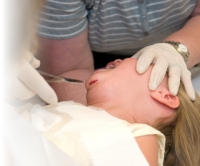Assessment of Children's Pain course



This session describes the assessment of pain in paediatric practice highlighting the different methodologies used when assessing acute and chronic pain.
Learning Objectives
By the end of this session you will be able to:
- Identify appropriate clinical methods to assess pain
- Explain the relevance of the biopsychosocial model to pain assessment in children
- List the elements of cyclical assessment
- Distinguish between methods suitable for assessing acute and chronic pain
- Describe age-appropriate, validated pain assessment tools that can be used by the child, parent or carer and the healthcare professional
In children, pain assessment can present greater challenges than in adults, because the naturally occurring changes of growing up affect not only their physical state, but also their psychological state and social status.
Ben is an Anaesthetic and Pain Management Specialist who trained at the Imperial School of Anaesthesia. Following general medical and anaesthetic training, he has undertaken dedicated, specialist chronic pain training, and a subsequent fellowship in paediatric chronic pain.
He is a Fellow of the Royal College of Anaesthetists and has been awarded Fellowship of the Faculty of Pain Medicine.
He has published educational and peer-reviewed material on pain management, clinical leadership and patient safety.
He is a content author for the e-PAIN project.


Becky has been a clinical nurse specialist with the Pain Control Service at Great Ormond Street Hospital for Children since 2002.
Since 2004 she has also been a lecturer in paediatric pain management at London South Bank University in the Department of Children’s Nursing, Faculty of Health and Social Care.
She is a content author for the e-PAIN project.

- Anaesthesia Fundamentals | Physiology | Ventilatio...
- Posted By eIntegrity Healthcare e-Learning
- Posted Date: 2024-12-26
- Location:Online
- This session describes how and why ventilation and perfusion vary in the healthy lung. Causes of hypoxia, such as hypoventilation, increased dead space and shunt, are discussed to help the trainee explain and manage hypoxia clinically.
- Anaesthesia Fundamentals | Physiology | Pulmonary ...
- Posted By eIntegrity Healthcare e-Learning
- Posted Date: 2024-12-26
- Location:Online
- This session covers the measurement and clinical importance of lung volumes, including functional residual capacity and dead space. Information regarding the performance and interpretation of flow-volume loops is also included.
- Anaesthesia Fundamentals | Physiology | Co2 Carria...
- Posted By eIntegrity Healthcare e-Learning
- Posted Date: 2024-12-26
- Location:Online
- This session covers the physiology of how carbon dioxide is carried by blood, including its conversion into bicarbonate ions and the role of the red blood cell and haemoglobin in this process. The session also describes how buffers work, and the fundament
- Anaesthesia Fundamentals | Physiology | Function o...
- Posted By eIntegrity Healthcare e-Learning
- Posted Date: 2024-12-26
- Location:Online
- This session focusses on the function of haemoglobin in oxygen (O2) carriage from the lungs to other tissues where cells are supplied with the O2 required for oxidative phosphorylation in the mitochondria. We will cover the structure
- Anaesthesia Fundamentals | Physiology | Gaseous Ex...
- Posted By eIntegrity Healthcare e-Learning
- Posted Date: 2024-12-26
- Location:Online
- This session will introduce you to the physiological effects of altitude and the adaptations that occur with acclimatization. It also introduces the pathology and physiology of high pressure and decompression.







